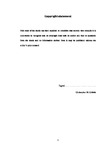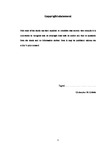Surface adsorption and pore-level properties of mineral and related systems of relevance to the recycling of paper
| dc.contributor.supervisor | Matthews, Prof. G. Peter | |
| dc.contributor.author | Gribble, Christopher Mark | |
| dc.contributor.other | School of Geography, Earth and Environmental Sciences | en_US |
| dc.date.accessioned | 2011-03-07T13:58:01Z | |
| dc.date.accessioned | 2014-01-27T08:59:53Z | |
| dc.date.available | 2011-03-07T13:58:01Z | |
| dc.date.available | 2014-01-27T08:59:53Z | |
| dc.date.issued | 2010 | |
| dc.date.issued | 2010 | |
| dc.identifier | 263631 | en_US |
| dc.identifier.uri | http://hdl.handle.net/10026.1/315 | |
| dc.description | Metadata merged with duplicate record (http://hdl.handle.net/10026.1/2869) on 20.12.2016 by CS (TIS). | |
| dc.description | This is a digitised version of a thesis that was deposited in the University Library. If you are the author please contact PEARL Admin (pearladmin@plymouth.ac.uk) to discuss options. | |
| dc.description | Full version unavailable due to 3rd party copyright restrictions. | |
| dc.description.abstract |
There is a significant problem for the paper recycling industry known as “stickies”. “Stickies” are tacky species, present in recycled paper and coated broke, derived from coating formulations, adhesives, etc. They impact negatively on paper quality and cause web runnability problems by deposit build-up. To sustain recycling, stickies are controlled by adsorbing them onto minerals added to the recycled stock. So the aim of the project was to characterise non-porous and porous minerals suitable for paper-making, and then use the knowledge gained to improve the adsorption of stickies. The pore level properties of the minerals used to control stickies are highly relevant in regulating adsorption of the stickies. Levels of pore architecture were investigated by characterising filter media with porosimetry, porometry, electron microscopy and modelling the combined results. Seven samples were studied, with pore size distributions ranging from simple unimodal to complicated bimodal. Porometry, porosimetry and SEM, individually can only determine primary pore architecture. A combination of experimental and modelling techniques allows a full characterisation of pore architecture from primary to quaternary levels. Calcium carbonates can be modified to change the pore architecture, which affects properties such as wetting. Their pore architecture was investigated to understand why some modified calcium carbonates do not show two distinct wetting rates. The investigation implied a significant surface area could be attributed to nano rugosity. The nano rugosity was responsible for the enhanced wetting of a sample. A zero length column was used to study diffusion and desorption of benzene with calcium carbonate. Desorption and diffusion coefficients for calcium carbonate systems were calculated from the corrected concentration versus time measurements. They showed how the pore architecture affects diffusion and desorption. By comparing the experimental results with a pore network simulation, it was possible to deduce the relative effect of surface diffusion. The adsorption of stickies onto different mineral grades was investigated using a novel proxy method to determine equilibrium constants and adsorption isotherms. The results were then used to understand the influence of particle size on the adsorption behaviour, with three mechanisms proposed. The equilibrium constant and adsorption isotherm data also allowed comparisons between hydrophilic and hydrophobic adsorption onto grades of talc. Recommendations are made for the optimum use of minerals for the removal of stickies, and for in-situ methods for monitoring and optimising removal. | en_US |
| dc.description.sponsorship | Omya Development AG, HEIF 3 programme | en_US |
| dc.language.iso | en | en_US |
| dc.publisher | University of Plymouth | en_US |
| dc.subject | Paper Recycling | en_US |
| dc.subject | Stickies | en_US |
| dc.subject | Desorption | en_US |
| dc.subject | Wetting | en_US |
| dc.subject | Zero Length Column | en_US |
| dc.subject | Adsorption | en_US |
| dc.subject | Diffusion | en_US |
| dc.title | Surface adsorption and pore-level properties of mineral and related systems of relevance to the recycling of paper | en_US |
| dc.type | Thesis | |
| dc.identifier.doi | http://dx.doi.org/10.24382/4236 |
Files in this item
This item appears in the following Collection(s)
-
01 Research Theses Main Collection
Research Theses Main




